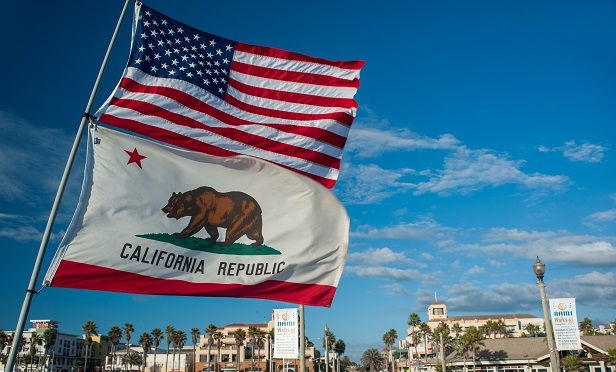 Thegovernor's executive order on drug purchasing came along with aseries of health-care proposals for the state, including expandinghealth care coverage to many more people. (Photo:Shutterstock)
Thegovernor's executive order on drug purchasing came along with aseries of health-care proposals for the state, including expandinghealth care coverage to many more people. (Photo:Shutterstock)
California's newly sworn-in Democratic governor has proposedusing the state's substantial buying power to drive down pharmaceutical costs, allowing governmentprograms, health insurers and private businesses to join forces tonegotiate against drugmakers.
|Under an executive order signed by Governor Gavin Newsom as oneof his first acts hours after being sworn in Monday, drug benefitsfor the about 13 million Californians in the state's Medicaid program would be shifted into a directpurchase system. The state would then target some drugs for bulkpurchasing, and private businesses and insurers would then be ableto join the buying pool.
|Related: The best fix for drug prices is already on thebooks
|“No state has more at stake on the issue of health care,” Newsomsaid in a statement announcing the order. “We will use our marketpower and our moral power to demand fairer prices for prescriptiondrugs.”
|Newsom governs the U.S.'s largest state, which if it was its owncountry would be the world's fifth-largest economy. His executiveorder came along with a series of health-care proposals, includingexpanding health care coverage to many more people. Those moves,unlike the drug-pricing order, would require legislative action orapproval of the federal government.
|For Newsom, the California proposal is a state-level version ofwhat many Democrats in Washington have argued for, but never beenable to put into law. Long fought by the pharmaceutical industry,Newsom's order bears some resemblance to the threats of PresidentDonald Trump, a Republican, to use the federal government'spurchasing power to get a better deal on prescription drugs.Current law bars the federal government from directly negotiatingdrug prices.
|“Employers and their employees are desperate to find a way toreduce drug costs,” said Bill Kramer, executive director of thePacific Business Group on Health, a nonprofit whose members includelarge employers. “We do think there's a great potential for publicand private sector purchasers to work together on drug costs andother health care costs.” Political Pressure
|For drugmakers, already facing a push by the Trumpadministration to lower their prices, and a Democratic House ofRepresentatives keen to join the administration in the effort, themove by California is an added headache.
|“I can't imagine pharma being ecstatic about this proposal andif the idea catches on, it would be difficult to contain theenthusiasm in other states,” said Jim Yocum, senior vice presidentat Connecture, a health-care information company that helps manageprice-transparency tools for Medicare, the federal health programfor seniors.
|Such programs have been tried before by hospitals and othergroups, who have banded together so they're not “atomized intoinsignificance when negotiating rates,” Yocum said. “What isdifferent here is the scale of what he's proposing. It has numbersthat would be able to drive more negotiating leverage.”
|Drugmakers said they were studying the order, which will requiremany subsequent actions by state agencies before any effects arefelt.
|“We welcome the opportunity to work with the Governor and hisadministration on comprehensive solutions to the problems patientsare facing accessing and affording their medicines,” said PriscillaVanderVeer, a spokeswoman for the drug industry lobbying groupPharmaceutical Research and Manufacturers of America, or PhRMA.Rising Costs
|Spending on prescription drugs in the U.S. in 2017 was $333.4billion, about 10 percent of the roughly $10,000 a year inper-person health-care spending. Drug spending, like otherhealth-care costs, has crept higher thanks to a combination ofaging demographics, innovative but costly new therapies, andregular hikes on drug prices by manufacturers.
|How much leverage California can gain over manufacturers maydepend on how willing it is to exclude some drugs, blocking accessto treatments to win price concessions.
|“Negotiations are all about leverage and so the larger thepurchaser the more concessions one can extract,” said SpencerPerlman, director of health care research at Veda Partners, whichanalyzes government policy for investors. “It's not clear to me howfar the state can push biopharma companies before the companiespush back.”
|Private insurers and some governments outside the U.S. makefrequent use of such tools.
|“This would mean denying state employees access to certaindrugs, which is politically tricky,” Perlman said. “Is the statereally willing to play hardball in the way that's necessary?”
|— With assistance by Riley Griffin
|Read more:
- New bipartisan bill targets drug prices–andMylan
- Same old story? Dem leaders in Big Pharma'spockets
- Quick take: Key themes affecting pharma in2019
Copyright 2019 Bloomberg. All rightsreserved. This material may not be published, broadcast, rewritten,or redistributed.
Complete your profile to continue reading and get FREE access to BenefitsPRO, part of your ALM digital membership.
Your access to unlimited BenefitsPRO content isn’t changing.
Once you are an ALM digital member, you’ll receive:
- Critical BenefitsPRO information including cutting edge post-reform success strategies, access to educational webcasts and videos, resources from industry leaders, and informative Newsletters.
- Exclusive discounts on ALM, BenefitsPRO magazine and BenefitsPRO.com events
- Access to other award-winning ALM websites including ThinkAdvisor.com and Law.com
Already have an account? Sign In
© 2024 ALM Global, LLC, All Rights Reserved. Request academic re-use from www.copyright.com. All other uses, submit a request to [email protected]. For more information visit Asset & Logo Licensing.








